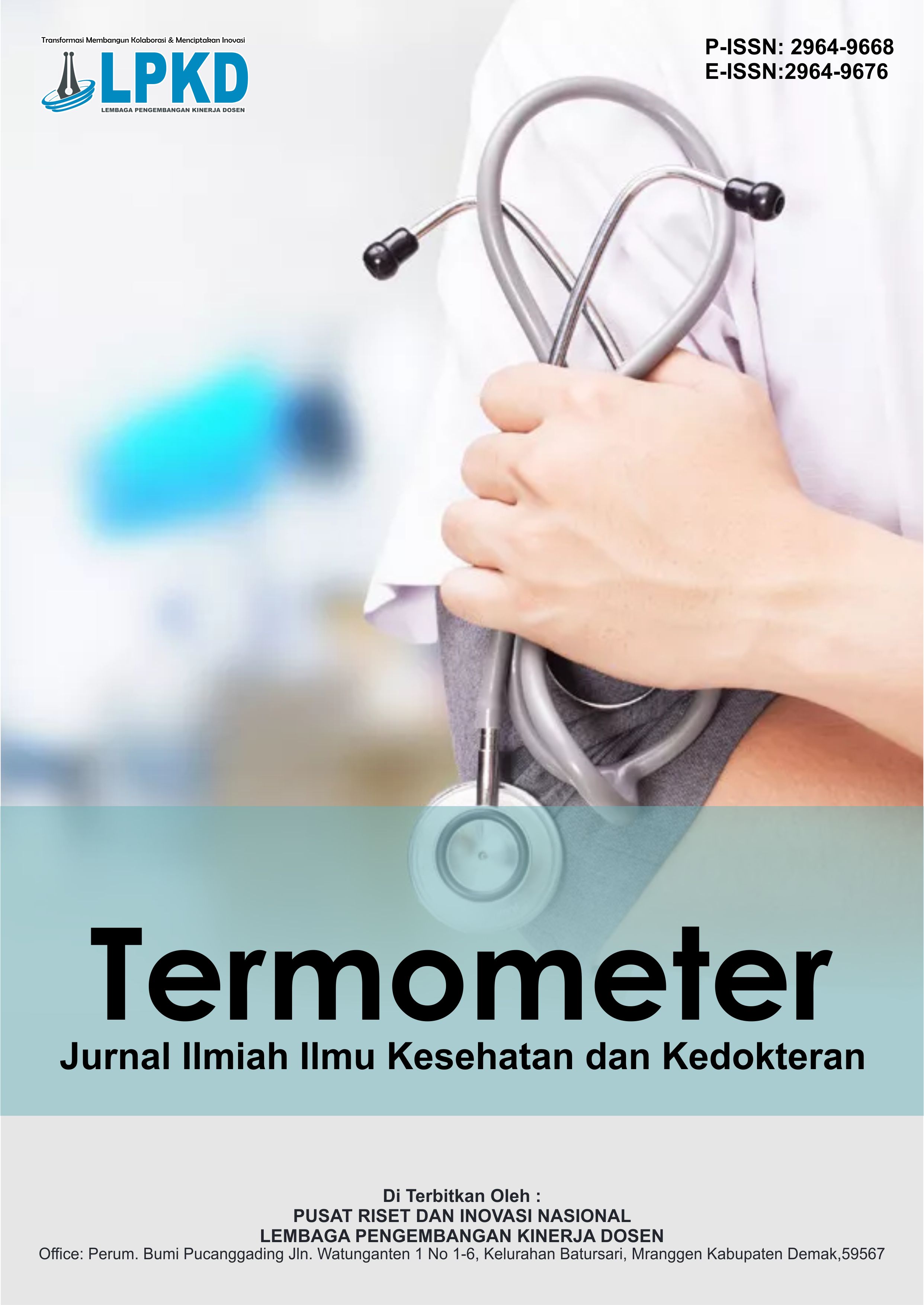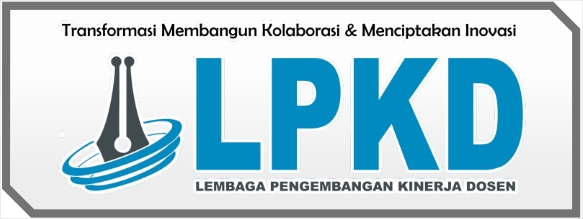Perspektif Penggunaan Raman Spectroscopy dalam Praktik Klinis dan Bioetika Modern
DOI:
https://doi.org/10.55606/termometer.v3i1.4676Keywords:
Bioethics, Molecular, Raman SpectroscopyAbstract
Raman Spectroscopy is a spectroscopic analysis technique to detect the molecular composition of a sample without damaging it and supports early diagnosis of various diseases and in mapping body tissues with high accuracy. Raman Spectroscopy has various problems that can be associated with bioethical studies such as the problem of biocompatibility of the materials used, challenges in producing consistent results, and the safety of laser use in patients. The research method used is qualitative and data is obtained from the Library Research method or literature research. The application of SERS, especially in humans, must involve various ethical perspectives such as patients, families, experimental animals and civil society. The context of SERS use is based on equal treatment of individuals, institutions and communities as well as the distribution of tools that are accessible to all groups and affordable and pay attention to the context of user welfare and autonomy. SERS regulations have been made by countries in Europe and the United States by creating very detailed standardization and procedures for using the tool so as not to cause dangerous side effects. In the view of Islamic law, SERS must pay attention to procedures that do not violate other Islamic principles, such as patient privacy and protection of sensitive body integrity.
Downloads
References
Bennett, H. S., Candela, G. A., Chang, T., Mundy, R. E., & Rosasco, G. J. (1975). Standard reference materials and data for Raman spectroscopy, electron paramagnetic resonance, and magnetic moment measurements.
Biasetti, P., & De Mori, B. (2021). The ethical matrix as a tool for decision-making process in conservation. Frontiers in Environmental Science, 9, 584636. https://doi.org/10.3389/fenvs.2021.584636
Bonhommeau, S., Cooney, G. S., & Huang, Y. (2022). Nanoscale chemical characterization of biomolecules using tip-enhanced Raman spectroscopy. Chemical Society Reviews, 51(7), 2416–2430. https://doi.org/10.1039/d1cs00962c
Bonifacio, A., Cervo, S., & Sergo, V. (2015). Label-free surface-enhanced Raman spectroscopy of biofluids: Fundamental aspects and diagnostic applications. Analytical and Bioanalytical Chemistry, 407(27), 8265–8277. https://doi.org/10.1007/s00216-015-8697-4
Cao, B., Lin, P., Wang, Y., Yang, W., Ren, L., Ge, Z., Sui, H., Gao, Y., Liu, M., Bei, G., Zhou, S., Zhou, Q., & Cui, F. (2024). Intelligent and ligand-based surface-enhanced Raman spectroscopy biosensors for the instant screening of viral respiratory infections. Biosensors and Bioelectronics: X, 20, 100527. https://doi.org/10.1016/j.biosx.2024.100527
Cialla, D., März, A., Böhme, R., Theil, F., Weber, K., Schmitt, M., & Popp, J. (2012). Surface-enhanced Raman spectroscopy (SERS): Progress and trends. Analytical and Bioanalytical Chemistry, 403(1), 27–54. https://doi.org/10.1007/s00216-011-5631-3
Cialla-May, D., Zheng, X.-S., Weber, K., & Popp, J. (2017). Recent progress in surface-enhanced Raman spectroscopy for biological and biomedical applications: From cells to clinics. Chemical Society Reviews, 46(13), 3945–3961. https://doi.org/10.1039/c6cs00847f
De Bruyne, S. T., & Marek, K. (2023). Looking backward to move forward: Early detection of neurodegenerative disorders. Science, 302(5646), 830–834. https://doi.org/10.1126/science.1198766
Dhankhar, D., Nagpal, A., Li, R., Chen, J., Cesario, T. C., & Rentzepis, P. M. (2021). Resonance Raman spectra for the in situ identification of bacterial strains and their inactivation mechanism. Applied Spectroscopy, 75(9), 1146–1154. https://doi.org/10.1177/0003702821991435
Dharmalingam, P., Venkatakrishnan, K., & Tan, B. (2019). An atomic-defect enhanced Raman scattering (DERS) quantum probe for molecular level detection – Breaking the SERS barrier. Applied Materials Today, 16, 28–41. https://doi.org/10.1016/j.apmt.2019.04.016
Guerrini, L., & Alvarez-Puebla, R. A. (2019). Surface-enhanced Raman spectroscopy in cancer diagnosis, prognosis, and monitoring. Cancers, 11(6), 1–15. https://doi.org/10.3390/cancers11060748
Keshavarz, M., Kassanos, P., Tan, B., & Venkatakrishnan, K. (2020). Metal-oxide surface-enhanced Raman biosensor template towards point-of-care EGFR detection and cancer diagnostics. Nanoscale Horizons, 5(2), 294–307. https://doi.org/10.1039/c9nh00590k
Lee, M., Lee, K., Kim, K. H., Oh, K. W., & Choo, J. (2012). SERS-based immunoassay using a gold array-embedded gradient microfluidic chip. Lab on a Chip, 12(19), 3720–3727. https://doi.org/10.1039/c2lc40353f
Li, T. D., Zhang, R., Chen, H., Huang, Z. P., Ye, X., Wang, H., Deng, A. M., & Kong, J. L. (2018). An ultrasensitive polydopamine bi-functionalized SERS immunoassay for exosome-based diagnosis and classification of pancreatic cancer. Chemical Science, 9(24), 5372–5382. https://doi.org/10.1039/c8sc01611a
Lin, C., Li, Y., Peng, Y., Zhao, S., Xu, M., Zhang, L., Huang, Z., Shi, J., & Yang, Y. (2023). Recent development of surface-enhanced Raman scattering for biosensing. Journal of Nanobiotechnology, 21(1), 1–37. https://doi.org/10.1186/s12951-023-01890-7
Lin, T., Song, Y.-L., Liao, J., Liu, F., & Zeng, T.-T. (2020). Applications of surface-enhanced Raman spectroscopy in detection fields. Nanomedicine, 15, 2971–2989. https://doi.org/10.1016/j.nano.2020.09.007
Mardalis. (1999). Metode Penelitian: Suatu Pendekatan Proposal. Bumi Aksara.
Masliah, E., Rockenstein, E., Veinbergs, I., Mallory, M., Hashimoto, M., Takeda, A., Sagara, Y., Sisk, A., & Mucke, L. (2000). Dopaminergic loss and inclusion body formation in alpha-synuclein mice: Implications for neurodegenerative disorders. Science, 287(5456), 1265–1269. https://doi.org/10.1126/science.287.5456.1265
McShane, T. O., Hirsch, P. D., Trung, T. C., Songorwa, A. N., Kinzig, A., Monteferri, B., ... & O’Connor, S. (2011). Hard choices: Making trade-offs between biodiversity conservation and human well-being. Biological Conservation, 144(3), 966–972. https://doi.org/10.1016/j.biocon.2010.12.013
Meng, J., Yang, Z., Chen, L., Zeng, X., Chen, H., Cui, F., & Jiang, Y. (2020). The investigation on the electrochemical performance of CuI as cathode material for zinc storage. Electrochimica Acta, 338, 135915. https://doi.org/10.1016/j.electacta.2020.135915
Mepham, B. (1996). Ethical analysis of food biotechnologies: An evaluative framework. In B. Mepham (Ed.), Food ethics (pp. 101–119). Routledge.
Minamoto, T., & Ronai, Z. E. (2001). Gene mutation as a target for early detection in cancer diagnosis. Critical Reviews in Oncology/Hematology, 40(3), 195–213. https://doi.org/10.1016/s1040-8428(01)00163-6
Ntziouni, A., Thomson, J., Xiarchos, I., Li, X., Bañares, M. A., Charitidis, C., ... & Lozano Diz, E. (2022). Review of existing standards, guides, and practices for Raman spectroscopy. Applied Spectroscopy, 76(7), 747–772. https://doi.org/10.1177/00037028221075690
O’Brien, C. M., Vargis, E., Paria, B. C., Bennett, K. A., Mahadevan-Jansen, A., & Reese, J. (2014). Raman spectroscopy provides a noninvasive approach for determining biochemical composition of the pregnant cervix in vivo. Acta Paediatrica, 103(7), 715–721. https://doi.org/10.1111/apa.12725
Pang, Y., Shi, J., Yang, X., Wang, C., Sun, Z., & Xiao, R. (2020). Personalized detection of circulating exosomal PD-L1 based on Fe3O4@TiO2 isolation and SERS immunoassay. Biosensors and Bioelectronics, 148, 111800. https://doi.org/10.1016/j.bios.2019.111800
Park, J., Hwang, M., Choi, B., Jeong, H., Jung, J. H., Kim, H. K., Hong, S., Park, J. H., & Choi, Y. (2017). Exosome classification by pattern analysis of surface-enhanced Raman spectroscopy data for lung cancer diagnosis. Analytical Chemistry, 89(12), 6695–6701. https://doi.org/10.1021/acs.analchem.7b00911
Pilot, R., Signorini, R., Durante, C., Orian, L., Bhamidipati, M., & Fabris, L. (2019). A review on surface-enhanced Raman scattering. Biosensors, 9(2), 57. https://doi.org/10.3390/bios9020057
Wang, W., Wang, W., Liu, L., Xu, L., Kuang, H., Zhu, J., & Xu, C. (2016). Nanoshell-enhanced Raman spectroscopy on a microplate for Staphylococcal enterotoxin B sensing. ACS Applied Materials and Interfaces, 8(24), 15591–15597. https://doi.org/10.1021/acsami.6b02905
Wang, Y., Yan, B., & Chen, L. (2013). SERS tags: Novel optical nanoprobes for bioanalysis. Chemical Reviews, 113(3), 1391–1428. https://doi.org/10.1021/cr300120g
Xue, T., Liang, W., Li, Y., Sun, Y., Xiang, Y., Zhang, Y., Dai, Z., Duo, Y., Wu, L., Qi, K., Shivananju, B. N., Zhang, L., Cui, X., Zhang, H., & Bao, Q. (2019). Ultrasensitive detection of miRNA with an antimonene-based surface plasmon resonance sensor. Nature Communications, 10(1), 1–9. https://doi.org/10.1038/s41467-018-07947-8
Yang, T., Guo, X., Wu, Y., Wang, H., Fu, S., Wen, Y., & Yang, H. (2014). Facile and label-free detection of lung cancer biomarker in urine by magnetically assisted surface-enhanced Raman scattering. ACS Applied Materials & Interfaces, 6(23), 20985–20993. https://doi.org/10.1021/am5057188
Yin, G., Li, L., Lu, S., Yin, Y., Su, Y., Zeng, Y., Luo, M., Ma, M., Zhou, H., Orlandini, L., Yao, D., Liu, G., & Lang, J. (2021). An efficient primary screening of COVID-19 by serum Raman spectroscopy. Journal of Raman Spectroscopy, 52(5), 949–958. https://doi.org/10.1002/jrs.6099
Zhou, W., Tian, Y. F., Yin, B. C., & Ye, B. C. (2017). Simultaneous SERS detection of multiplexed microRNA biomarkers. Analytical Chemistry, 89(5), 6120–6128. https://doi.org/10.1021/acs.analchem.6b04004
Zong, S., Wang, L., Chen, C., Lu, J., Zhu, D., Zhang, Y., Wang, Z., & Cui, Y. (2016). Facile detection of tumor-derived exosomes using magnetic nanobeads and SERS nanoprobes. Analytical Methods, 8(25), 5001–5008. https://doi.org/10.1039/c6ay00406g
Downloads
Published
How to Cite
Issue
Section
License
Copyright (c) 2024 Termometer: Jurnal Ilmiah Ilmu Kesehatan dan Kedokteran

This work is licensed under a Creative Commons Attribution-ShareAlike 4.0 International License.










